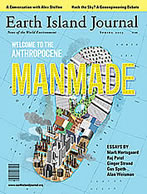Thanks for the shout out Mr. Sullivan on my humble musings on wilderness in the Anthropocene!
Fifty years ago last week, Lyndon Johnson signed into law the Wilderness Act. David Biello assesses what’s happened since:
[M]ost wilderness in the continental U.S. is not untrammeled land. Wilderness areas are often former working landscapes—the Orwellian phrase created by the logging industry to explain away clear cuts—whether they were cleared for logging or farming over the course of the 19th century and early 20th centuries in places like the Adirondacks. The great forest that once covered the eastern U.S. has been re-growing for the last 50 years, even if its primeval quality may be illusory, given the exotic animals and plants that now live there. And, in this era of global warming, even the Artic and other remote spots show signs of human trammeling—whether the leavings are plastic detritus or a changed climate.
How he thinks about the future of the wild:
Wilderness poses this fundamental question…
View original post 185 more words

